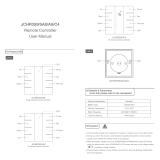Page 6
12.4 Page Freeze ............................................................................................................. 56
12.5 Latest Takes Precedence ......................................................................................... 57
12.6 ICPB Attributes (Filters) ............................................................................................ 57
13 Edit Memory........................................................................................... 58
13.1 Overview .................................................................................................................. 58
13.2 Fade Times .............................................................................................................. 58
13.3 Link Time .................................................................................................................. 59
13.4 Memory Name .......................................................................................................... 59
13.5 Cue Name ................................................................................................................ 59
13.6 Jump to Cue ............................................................................................................. 59
13.7 Change Cue Order ................................................................................................... 59
13.8 Include ICPB Attributes (Filters) ................................................................................ 59
13.9 Copy Cue ................................................................................................................. 60
13.10 Copy Memory ........................................................................................................ 60
13.11 Delete Cue ............................................................................................................ 60
13.12 Delete Memory ...................................................................................................... 60
13.13 Chase ................................................................................................................... 61
13.14 Edit a Cue ............................................................................................................. 62
13.15 Edit Animations and Shapes ................................................................................. 62
14 Live Speed ............................................................................................. 63
14.1 Overview .................................................................................................................. 63
14.2 Select ....................................................................................................................... 64
14.3 Tap to Beat ............................................................................................................... 64
14.4 Pause/Play ............................................................................................................... 64
14.5 Override Indicators ................................................................................................... 65
14.6 Reset Live Speed ..................................................................................................... 65
15 Flash ...................................................................................................... 66
15.1 Flash Level ............................................................................................................... 66
16 Remote Triggers .................................................................................... 67
16.1 Overview .................................................................................................................. 67
16.2 Network Connection ................................................................................................. 67
16.3 Add a Remote Trigger .............................................................................................. 68
16.3.1 OSC Remote Triggers ....................................................................................... 69
16.3.2 UDP and TCP Remote Triggers ........................................................................ 70
16.3.3 Play Memory. .................................................................................................... 71
16.3.4 Other Cues Off .................................................................................................. 73
16.3.5 Next Cue ........................................................................................................... 73
16.3.6 All Cues Off ....................................................................................................... 73
16.4 Remote Triggers and Red Playback Faders ............................................................. 73






























